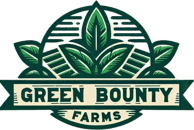Use Case: Sourcing Fresh and Unique Produce from Green Bounty Farms for a Restaurant
Actors:
Food Pantry/Soup Kitchen Staff: Represents organizations providing meals or groceries to individuals and families in need.
Green Bounty Farms: Non-profit agricultural organization specializing in container farming of mushrooms, leafy greens, lettuce, and edible flowers, with a mission to support food security through produce donations.
Primary Objective: Food pantries and soup kitchens want to provide their clients with nutritious, fresh, and locally sourced produce. Green Bounty Farms aims to support these organizations by donating high-quality mushrooms, leafy greens, lettuce, and edible flowers to enhance meal options and improve food access.
Steps in the Use Case
Initial Contact:
The food pantry or soup kitchen learns about Green Bounty Farms' donation program.
They reach out to inquire about the types of produce available and the logistics of receiving donations.
Understanding the Donation Program:
Green Bounty Farms shares key details:
Types of Produce: Fresh mushrooms, leafy greens, lettuce, and edible flowers.
Nutritional Value: Emphasis on the health benefits of fresh, nutrient-dense produce.
Regular Supply: Availability of consistent donations thanks to year-round container farming.
Needs Assessment:
The pantry or kitchen discusses their specific needs, such as quantities and preferred delivery schedules.
They identify how the donated produce can complement their existing food inventory or menu offerings.
First Donation Delivery:
Green Bounty Farms delivers a batch of fresh produce, ensuring it is packaged for easy distribution or use in meal preparation.
Integration into Services:
Food pantries incorporate the produce into grocery packages for distribution to clients.
Soup kitchens use the donations to prepare healthy meals, such as:
Mushroom-Based Soups or Stir-Fries: Filling, nutrient-dense dishes.
Fresh Salads with Leafy Greens and Lettuce: Providing vital vitamins and minerals.
Edible Flowers: Added to meals as a unique and uplifting touch.
Feedback Loop:
The food pantry or soup kitchen provides feedback on the impact of the donations.
Green Bounty Farms adjusts donation sizes or delivery schedules to better meet the organization's needs.
Ongoing Relationship:
Green Bounty Farms maintains a consistent supply of produce donations.
Both parties collaborate on awareness initiatives, such as sharing stories of the impact on local communities.
Benefits for the Food Pantries and Soup Kitchens
Improved Nutrition for Clients:
Access to fresh produce supports healthier diets for individuals and families in need.
Enhanced Meal Variety:
Incorporating high-quality ingredients like mushrooms and greens diversifies the meal options available.
Increased Capacity to Serve:
Regular donations alleviate the burden of sourcing fresh produce, allowing resources to be allocated elsewhere.
Community Upliftment:
Clients feel valued and respected when provided with fresh, visually appealing produce, including edible flowers.
Strengthened Partnerships:
A reliable relationship with Green Bounty Farms builds a network of support for long-term food security efforts.
Educational Opportunities:
Donations serve as a tool to educate clients on the importance of fresh produce in their diets and how to prepare it.
Conclusion
By donating fresh, locally grown produce to food pantries and soup kitchens, Green Bounty Farms directly supports food security and nutrition in underserved communities. This partnership ensures that vulnerable populations have access to healthy and high-quality food, empowering organizations to better serve their clients while advancing Green Bounty Farms’ mission of giving back to the community.
© 2025. All rights reserved.







